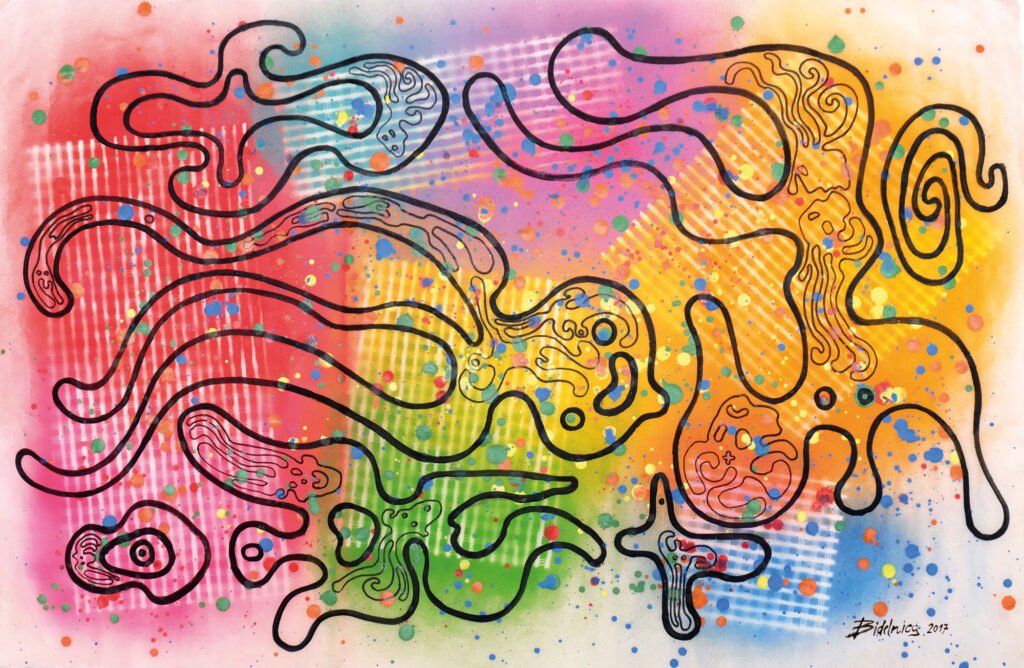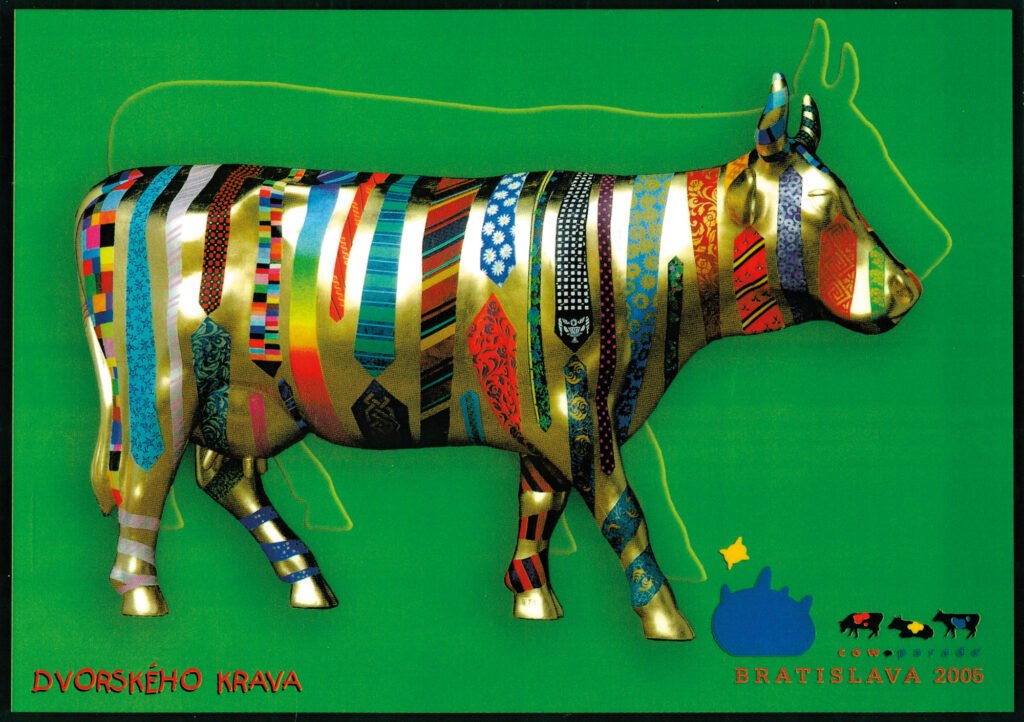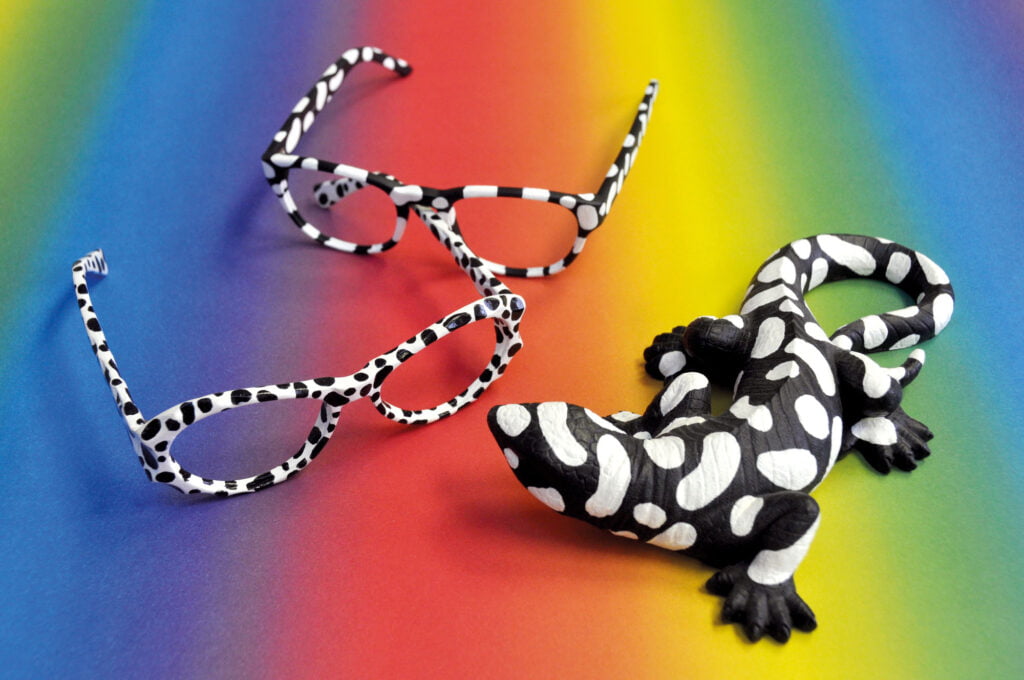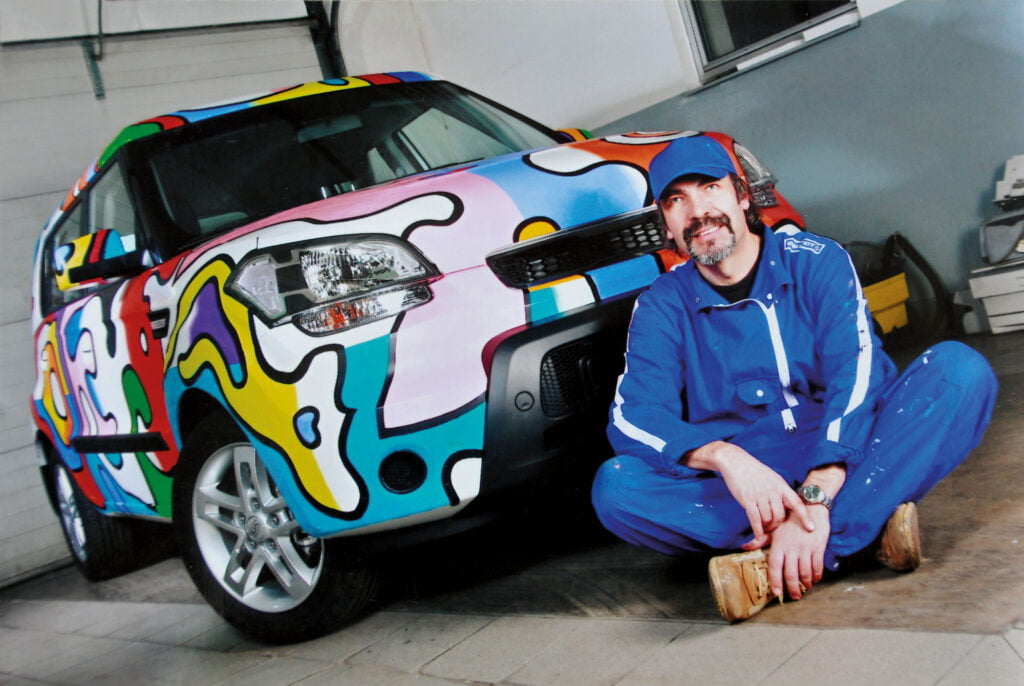Tak sa nadchýnal Andy Warhol moderným konzumným životom, médiami a hviezdami. Tento životný pocit vyžarujú do posledného detailu i diela Daniela Bidelnicu. Expresívne farebné bohatstvo, svet objímajúci životný pocit a hlboký obdiv k vzorom ako Pablo Picasso, Andy Warhol alebo Jim Morrison odrážajú realitu našej doby, forsírujú a reflektujú kultúrnu premenu, ktorú dnes možno kdekoľvek vidieť a cítiť. Dielo Daniela Bidelnicu prechádza od antického mýtu až k súčasnosti a pop-artu. Pôsobivé mužské antické torzá prenáša do súčasnosti a azda najznámejšia maľba sveta – Mona Lisa Leonarda da Vinci – sa usmieva z mora farieb v 23-násobnom vyhotovení. Bustu kráľovnej Nefertiti – večnú krásu ako originál – interpretuje Daniel Bidelnica prostredníctvom intenzívnych farebných štvorcov a ženskej hlave s jemnými krivkami dodáva úplne novú štruktúru a harmóniu. Sám pritom vstupuje na scénu ako objekt a partner, svoju tvár pomaľuje presne rovnakými farbami ako bustu a harmonicky sa tým vkladá do obrazu antickej sochy. Štýlovo veľmi rôznorodé práce umelca vytvárajú most medzi abstraktným expresionizmom a novou klasikou krásy všednosti. Bidelnica siaha pri svojej práci na logá značiek známych automobilov – čo je nanovo interpretovaný odkaz na klasikov pop-artu. Využíva pritom kľúčové stimuly reklamy, hrá sa s nimi, variuje a dáva ich do prekvapivých farebných kontextov. Či je to už Audi, VW, Porsche alebo Škoda – na to, aby ich recipientovi pripomenul, je potrebná len bizarná, obrátená farebnosť log. Čo sa na prvý pohľad zdá cudzie, pôsobí pri pozornejšom uvažovaní predsa veľmi dôverne. Zväčša veľkoformátové diela pôsobia vďaka dvojdimenzionálnym jasným ohraničeniam a hojným vrstvám olejových farieb nezvykle plasticky. Obrazy si vytvárajú vlastnú dynamiku, abstraktnú rozmanitosť farby a formy. Ich reflexia sa stáva súhrou známeho a nového. V tom, čo pôsobí na prvý pohľad ako nové, možno pri precíznom pozorovaní objaviť množstvo prekvapivých detailov. Dielo Daniela Bildelnicu charakterizuje nesmierna schopnosť premeny, ktorej motorom je farebnosť. Diela dejín umenia sa ako cenné objekty vysokej kultúry alebo jednoduché objekty každodennej potreby podriaďujú ako časť banalizovanej masovej kultúry tej istej vizuálne pregnantnej obrazovej stratégii. Darí sa mu vytvoriť z nich fait accompli, komplicov tej istej krásy. Podobne ako Picasso využil Daniel Bidelnica ako stimulujúci umelecký impulz pre svoje dielo zdanlivý rozpor medzi vysokou a každodennou kultúrou. Vznikajú tak obrazy bežných objektov, ako napríklad logá, prasatá, žaby, egyptské busty a reliéfy, s ktorými sa neustále stretávame na exponovaných miestach, v múzeách alebo celkom prosto v každodennom živote. Bidelnica zároveň neustále parafrázuje a reflektuje diela klasickej moderny a pop-artu. Svojím nezameniteľným spôsobom maľovania bežných a umeleckých predlôh ako produktov čisto mechanickej činnosti sa stal poslom nového, humánneho pohľadu na svet a novej klasiky krásy všednosti.
Monika Vanecek-Pelz
Kritička umenia
This was how Andy Warhol enthused about the modern consumer life, media and stars. This feeling about life also shines into the last detail of the work of Daniel Bidelnica. The expressive wealth of colour, the world embracing feeling about life and deep admiration for such models as Pablo Picasso, Andy Warhol or Jim Morrison reflect the reality of our time. They force and reflect the cultural change, which can be seen and felt everywhere today. The work of Daniel Bidelnica proceeds from ancient myth to the present and Pop Art. He brings the effective Antique male torso into the present, and perhaps the most widely recognized painting of all – Leonardo da Vinci’s Mona Lisa smiles out from a sea of colour in a 23-fold reproduction. Daniel Bidelnica interprets the bust of Queen Nefertiti – an eternal beauty like the original – by means of intensive coloured squares, and adds an entirely new structure and harmony to the female head with fine curves. He enters the scene himself as an object and partner, he paints his own face with exactly the same colours as the bust, and so inserts himself harmoniously into a picture of an ancient sculpture. Stylistically very heterogeneous works form a bridge for the artist between abstract expressionism and a new classicism of everyday beauty. Bidelnica uses in his work the logos of famous cars – a further interpretation of the tradition of the classics of Pop Art. He also uses key stimuli from advertising, plays with them, varies them and puts them into surprising colourful contexts. Whether it is Audi, VW, Porsche or Škoda, only the bizarre, reversed, colouring of the logos is necessary to remind the recipient of them. What appears strange at first sight, has a very familiar character on closer consideration. The mostly large format works owe their effect to clear two-dimensional definitions and abundant layers of oil paint of almost sculptural character. The pictures form their own dynamic, abstract variety of colour and form. Their reflection becomes an interplay of the familiar and the new. What appears at first sight to be new may contain a multitude of surprising details when examined carefully. The work of Daniel Bidelnica is characterized by an immense ability to undergo transformation, and the driving force of this is colour. Works from the history of art as valuable objects of high culture and/or simple everyday objects conform as part of the banalized mass culture to the same visually appropriate pictorial strategy. He succeeds in creating a fait accompli from them – part of the same beauty. Like Picasso, Daniel Bidelnica uses the apparent conflict between high and everyday culture as a stimulating artistic impulse for his work. Thus, pictures are formed of ordinary objects such as logos, pigs, frogs, Egyptian busts and reliefs, which we constantly encounter in exhibitions, museums or simply in everyday life. At the same time, Bidelnica is always paraphrasing and reflecting on the works of classical Modern and Pop Art. With his irreplaceable method of painting ordinary or artistic subjects as products of a purely mechanical activity, he became the herald of a new humane view of the world and a new classicism of the beauty of the everyday.
Monika Vanecek-Pelz
Art Critic








